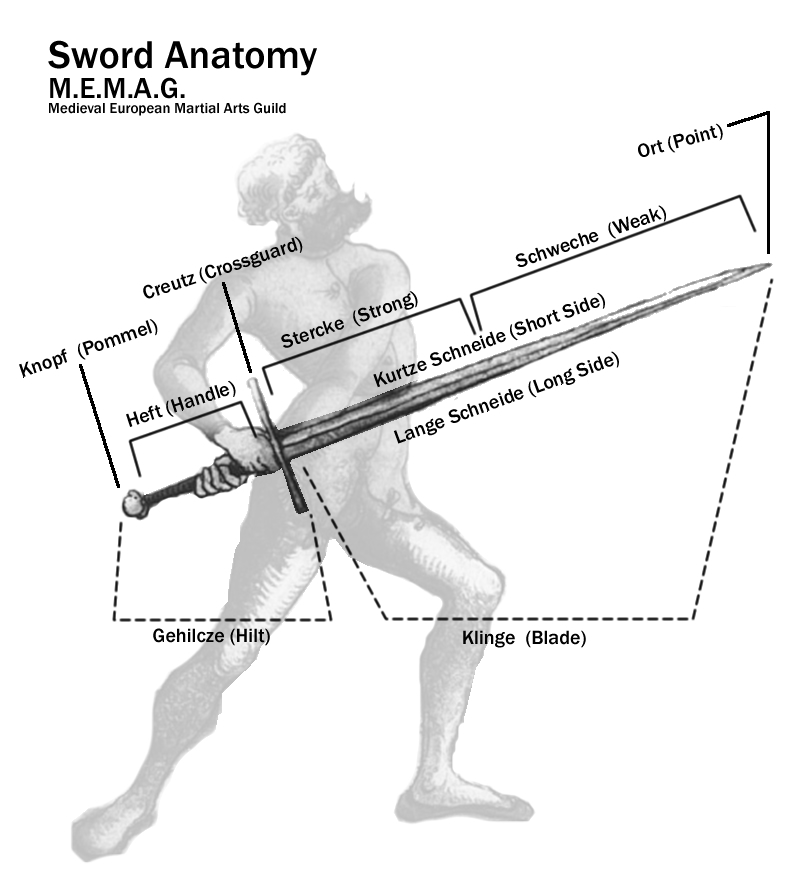

Shake hands with the sword. With your other hand hold the handle just above the pommel. With a short handle the other hand may go to the pommel, but don’t use it to support the weight of the sword. By not holding the pommel, it can do its job as a counter-weight and you will strike harder. You can push-pull to get power, but never just pull on the pommel.
You may rest the thumb lightly on the side of the blade.
The half of the blade nearest your hands is the strong. The other half the weak, easy to displace by leverage. The edge in line with your knuckles is the true or long edge; the other is the false or short edge.
Stand with your feet shoulder width apart with one foot forward. Face your opponent with one shoulder somewhat closer, but don’t profile. Put a spike on the ball of each foot and push it into the ground.
Step with a natural motion, never too wide and never crossing your feet, and always moving them apart and then together. Stay balanced, never too much weight on either foot. Sometimes you will need to make a short leap. Your sword should move first (your sword is your shield) and be careful not to telegraph your movements.
You will step in or out, step around, or leap. Step in or out to change distance. Move the lead foot and then gather up the back foot if you are keeping your sword on the same side. If you are changing sides, pass your back foot past the lead foot.
When you strike, step around so that you come in from the side where it is easier to reach your opponent than from the front.
There are three measures in long sword. When you are “out of measure” you may move and change guards freely.
Proper measure for starting attacks is called the Zufechten. At this range you can strike your opponent by stepping in or around, and your opponent must also step to strike you.
One step closer and you are in the Krieg (war), where you may hit your opponent without stepping. This is also grappling range (close enough to touch your opponent’s hands).
Remember to fight from your own (not your opponent’s) measure and don’t rush to war.
Don’t sit in a guard and wait to be attacked. Stay in motion because it is easier to keep moving than to start moving. You should not remain too long in one guard. Move quickly when you are attacked.
There are four opening: right-high, left-high, right-low, and left-low. The dividing line between high and low is your opponent’s forearms.
Always go for the openings and never the sword.
When in the bind and your opponent displaces with strength (particularly against your strong) you can Duplier by pushing the pommel under your right arm with your left hand. You can then diagonally strike the face or the head on the right side of his neck (his own right side). This works well only if your opponent strongly displaces your sword on your strong.
When in the bind and your opponent is ready to thrust to your throat or face, Mutier by winding the short edge at his sword, raise your arms and thrust at the lower opening (groin).
If you are a right hander, lead with the left foot and strike from the right (with a step). Don’t wait to be struck first. Right handed practitioners should avoid starting high on the left. And if you are left hander you should fight from high left to low (on the right), or learn to fight right-handed.
Strikes and thrusts go directly from the guard to your opponent’s head or body by the shortest and nearest way possible, as if pulled by a string.
